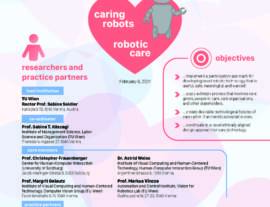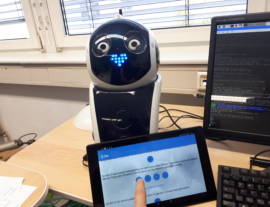Right now is an important time in the research fields of Human-Robot Interaction and Social Robotics (sHRI): Technological readiness levels increase and robots more and more enter real-world application domains. For social service robots to succeed in our everyday lives, they need to integrate with human needs. The challenge to design meaningful social service robots is evident as the lack of service robots as off-the-shelf products for end users. It is to my conviction a matter of technology readiness level combined with a lack of experienced usefulness that robots are not yet omnipresent in our social environments.
Relevant Related Projects on Social Human-Robot Interaction (sHRI)
Caring Robots / Robotics Care 2022-2027
In this project, we aim to develop and implement novel and desirable roles of robotic...
Learn moreRoboGen 2018-2021
In this project, we develop gender-sensitive interaction paradigms for an embodied social...
Learn more
Relevant Related Publications on Social Human-Robot Interaction (sHRI)


